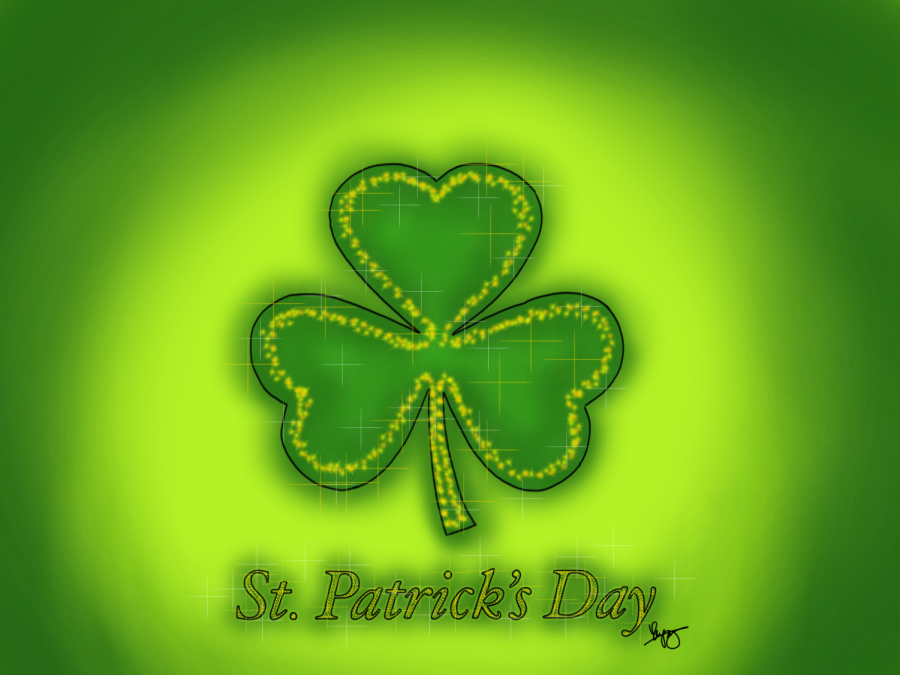A Brief History of St. Patrick’s Day Celebrations
March 19, 2021
For many students, annual traditions that surround St. Patrick’s Day—wearing
green to avoid a friendly pinch, looking for leprechauns or rainbows, wishing each other good luck and so on—have been a constant since they started elementary school or maybe even earlier. However, the majority of high schoolers are unaware of the long history of the holiday and its traditions, which date back over 1,000 years.
As explained in the Encyclopedia Britannica, the holiday itself celebrates the
death of its namesake, St. Patrick, who is credited with bringing Christianity to Ireland more than 1,000 years ago. He lived during the 5th century and was born in Britain when it was under Roman control. He initially entered Ireland as a slave at sixteen after being kidnapped and later escaped captivity, leaving the country. Patrick later returned to Ireland around 432 C.E. when he is credited with bringing Christianity to its native inhabitants.
After his death on March 17th, 461 C.E., his image and likeness became
further ingrained into Irish culture. According to Encyclopedia Britannica, a well-known legend claims that he allegedly used the three leaves of an Irish clover, or shamrock, to depict and explain the concept of the Christian Holy Trinity.
By the 9th or 10th century, St. Patrick’s Day was widely celebrated by Roman
Catholics in Ireland who spent the morning at church or in prayer and the afternoon feasting with companions. However, writers for History.com found that the famed tradition of St. Paddy’s Day parades did not emerge until after 1601. The colony of Florida’s Irish Roman Catholic vicar, Ricardo Artur, organized the first celebration. The first parade in the Saint’s honor included cannon blasts and gunfire.
It wasn’t until immigrants began arriving en mass to the United States that the modern traditions most Americans are familiar with really came to fruition. One of the first recorded locations for American St. Patrick’s Day celebrations was Boston, Mass.
According to History.com, in 1737, more than twenty Presbyterian immigrants met to celebrate the saint and form the Charitable Irish Society to “assist distressed Irishmen in the city.”.
Later, during the 1850s, Irish immigrants rejected the nativist, anti-immigrant views of the “Know-Nothing”, or American Party, and organized a street parade in celebration of their culture.
“It was a celebration of being Irish,” remarked historian Mike McCormack, “but also there was a bit of defiance because of the bigotry by the Know-Nothings against them.”
Surprisingly, the holiday used to be celebrated quite differently in Ireland itself. The day was a quiet recognition of St. Patrick, with church attendance being of equal importance to parties and feasts. Pubs were barred from opening on the holy day. It was only in the 20th century that Ireland saw how Americans celebrated the holiday through television and relaxed the rituals. A multi-day St. Patrick’s Day Festival in Dublin premiered in 1996 and other lively celebrations were allowed.
Interestingly enough, it was never the Irish who encouraged the rampantly green everything—bagels, beer, eggs—but rather Americans who started and maintained such traditions. In fact, it’s worth noting that the color most commonly associated with the famed Saint was actually blue, not green! The history of St. Patrick’s Day is more extensive and rich than many anticipate and more impacted by the American interpretation of the holiday as well. Regardless, whether it be wearing green, going to mass, feasting with friends, or attending a parade, Irish history is certainly something to be celebrated.






























